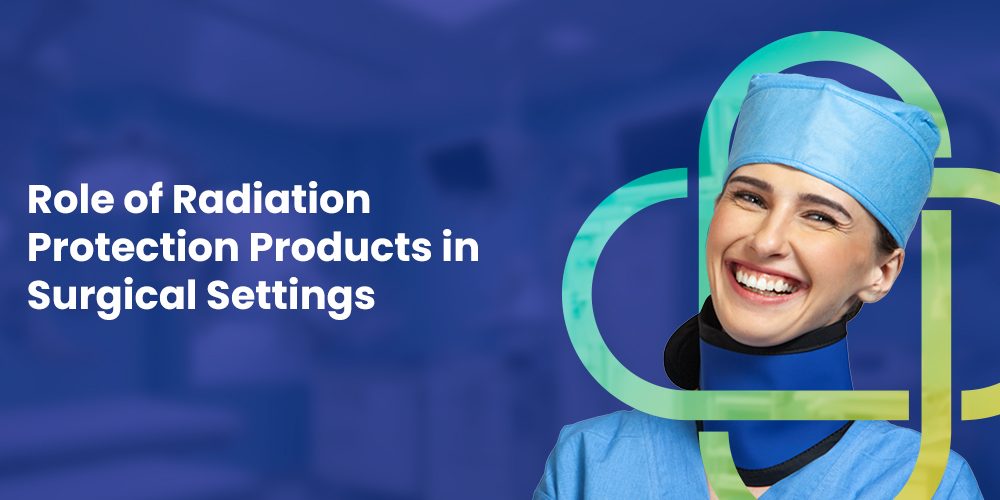Radiation exposure is a significant concern in surgical settings, particularly in procedures involving fluoroscopy, interventional radiology, and other medical imaging techniques. Healthcare professionals, including surgeons, radiologists, and operating room staff, are at risk of exposure to ionizing radiation during these procedures. To mitigate these risks, various radiation protection products are essential. In this comprehensive article, we will delve into the importance of radiation protection products in surgical settings, highlighting the significance of radiation protection gloves, aprons, lead eyewear, ovarian and gonad shields, head shields, and thyroid shields. Understanding the necessity of these protective measures is crucial to ensure the safety and well-being of both healthcare providers and patients.
Role of Radiation Gloves
Radiation gloves are a fundamental component of radiation protection in surgical settings. They are typically made of lead or other radiation-absorbing materials, providing a barrier between the surgeon’s hands and ionizing radiation. These gloves are designed to reduce radiation exposure to the hands and fingers, which are particularly sensitive to radiation damage.
Surgeons often use fluoroscopy and other imaging techniques during minimally invasive procedures, exposing themselves to scattered radiation. Without radiation gloves, the hands would be vulnerable to harmful radiation doses, potentially leading to long-term health issues such as skin damage and increased cancer risk. The importance of radiation gloves lies in their ability to safeguard the surgeon’s hands, enabling them to perform delicate procedures with confidence while
Significance of Radiation Aprons
Radiation aprons are another vital element of radiation protection in surgical settings. These aprons, typically lead-lined or comprised of lead equivalent material, are worn by healthcare professionals during procedures involving ionizing radiation. The primary purpose of radiation aprons is to shield the torso and vital organs from direct and scatter radiation.
Human body internal organs are extremely sensitive to radiation. Prolonged exposure to ionizing radiation can lead to various health problems, including radiation burns and an increased risk of cancer. By wearing radiation aprons, healthcare providers can ensure that their vital organs are adequately protected while they perform their duties in the surgical suite. This protection not only enhances the safety of healthcare professionals but also contributes to the overall quality of patient care. There are a variety of additional radiation protection accessories available that can be paired with aprons, such as an arm guard or leg guard for added safety
Role of Lead Eyewear
Lead eyewear, such as lead glasses, play a critical role in safeguarding the eyes of healthcare professionals in surgical settings. The eyes are highly sensitive to radiation, and exposure to ionizing radiation can lead to cataracts, vision impairment, and other serious eye conditions.
During procedures involving fluoroscopy or other imaging techniques, the eyes may be exposed to scattered radiation. Lead eyewear is specifically designed to block and absorb this scattered radiation, providing a protective barrier for the eyes. The importance of lead eyewear lies in its ability to prevent long-term eye damage and ensure the visual well-being of healthcare providers. By wearing lead eyewear, surgeons and other staff members can work confidently in radiation-prone environments, knowing that their eyes are shielded from harm.
Role of Ovarian and Gonad Shields
Ovarian and gonad shields are specialized radiation protection devices designed to protect the reproductive organs from ionizing radiation. These shields are particularly important for female healthcare professionals who may be exposed to radiation during surgical procedures.
The reproductive organs are highly susceptible to radiation damage, which can result in infertility, genetic mutations, and other serious health issues. Ovarian and gonad shields are placed strategically to cover these sensitive areas, minimizing the risk of radiation exposure. The importance of these shields extends beyond the immediate safety of healthcare providers; it also ensures their reproductive health and fertility remain uncompromised.
Role of Lead Caps
Lead caps, also known as radiation caps or head shields, are essential in protecting the head and brain from ionizing radiation during surgical procedures. The head is a critical area to shield, as it houses the brain, which is highly sensitive to radiation.
Lead caps are typically lined with lead or other radiation-absorbing materials and are worn by surgeons, radiologists, and other healthcare professionals who work in radiation-prone environments. These caps effectively block and absorb scattered radiation, reducing the risk of radiation exposure to the head and brain.
Radiation-induced damage to the brain can have severe consequences, including cognitive impairment and an increased risk of neurological disorders. By wearing lead caps, healthcare providers ensure their cognitive health remains uncompromised, allowing them to continue delivering high-quality patient care without compromising their own well-being.
Significance of Thyroid Shields
One significant drawback of traditional lead aprons is their weight. Standard lead aprons can vary in weight, with an average apron weighing approximately 8 pounds. This weight can become burdensome for healthcare professionals who wear them for extended periods, leading to discomfort, fatigue, and even musculoskeletal issues over time.
Ergonomic Advancements
Recognizing the importance of comfort and safety, Kiran have made efforts to design lead aprons with ergonomic features, such as adjustable straps and padded shoulders, to distribute the weight more evenly and reduce strain on the wearer. Additionally, lead-free aprons, being lighter, address some of these ergonomic concerns, making them a viable alternative for those who prioritise comfort during radiation-related procedures.


